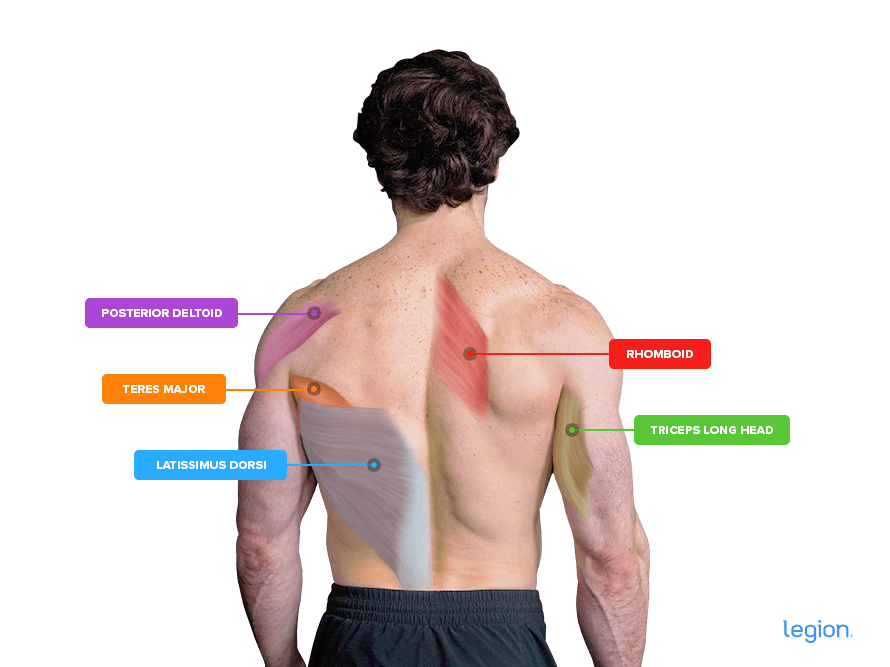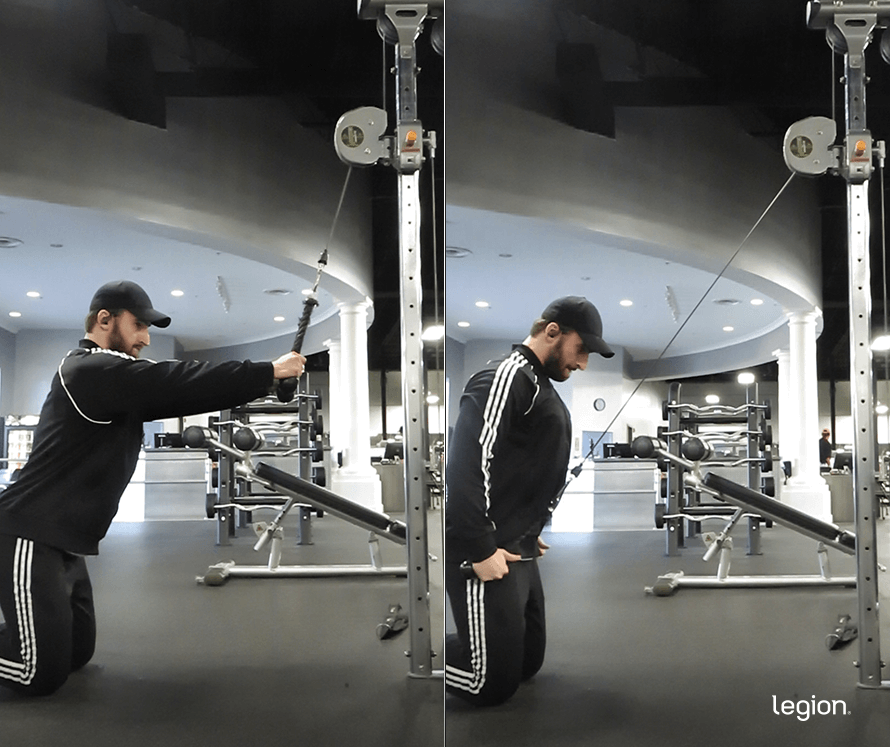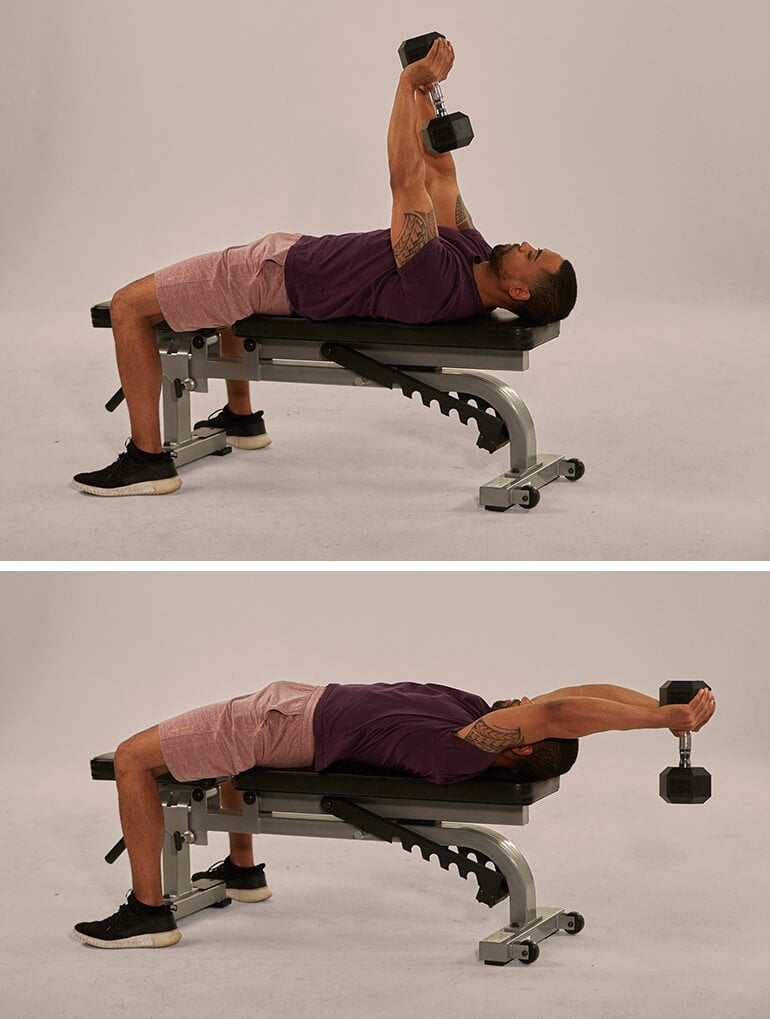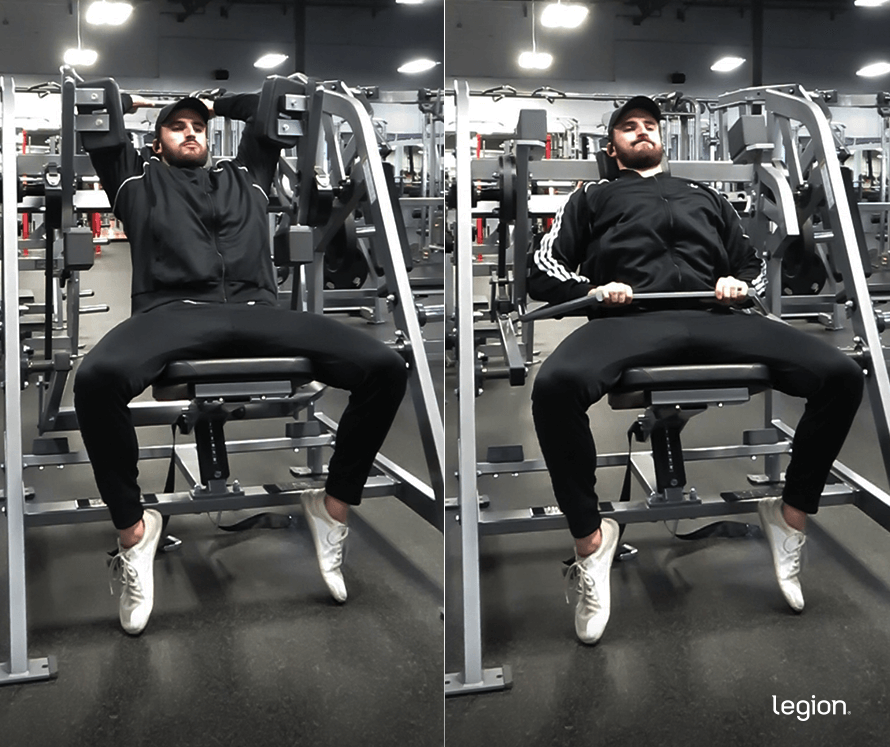How to Do the Cable Pullover: Muscles Worked, Form, and Alternatives
The cable pullover is a lat exercise that’s surged in popularity recently.
There are two reasons for this.
First, it involves bringing your arms in an arc from overhead to your sides against resistance, which trains your back in a way that few other exercises can replicate.
Second, unlike other back exercises, it trains your lats through their full range of motion and in a fully stretched position, which promotes muscle growth.
In other words, the cable pullover is uniquely effective in training the lats and an ideal exercise for back development.
In this article, you’ll learn what the cable pullover is, its benefits, which muscles it works, how to do it with proper form, the best cable pullover alternatives, and more.
- What Is a Cable Pullover?
- Cable Rope Pullover vs. Straight-Bar Cable Pullover
- Cable Pullover: Benefits
- Cable Pullover: Muscles Worked
- Cable Pullover: Form
- 1. Set up
- 2. Pullover
- 3. Extend
- The Best Cable Pullover Alternatives
- 1. Kneeling Cable Pullover
- 2. Dumbbell Pullover
- 3. Machine Pullover
Table of Contents
What Is a Cable Pullover?
The cable pullover (also called the “cable lat pullover” or “lat prayer”) is a lat isolation exercise performed using a cable machine.
To perform the cable pullover, grip a handle attached to a high cable pulley, take a few steps backward until your arms are stretched overhead and your upper body is leaning forward, then pull the handle in an arc toward your feet until your hands touch your thighs.
You can use several different handles to perform the cable pullover, including the rope handle, straight bar, and EZ bar. This is why people often refer to the cable pullover as the “cable rope pullover,” “straight bar cable pullover,” and so forth.
While each handle has benefits, the cable rope pullover is the most common variation (and the one we’ll focus on in the article).
Cable Rope Pullover vs. Straight-Bar Cable Pullover
Most people prefer the cable rope pullover over the straight-bar cable pullover because the rope allows a greater range of motion compared to the bar.
When performing the cable pullover with a bar, you have to stop each rep when the bar touches your thighs, even though you could likely pull the weight a few inches further without discomfort.
In contrast, the rope handle allows your hands to pass your thighs and extend behind your body. This is significant because training your muscles through a longer range of motion generally leads to more muscle growth than training through a shorter range of motion.
That said, some weightlifters prefer the straight bar to the rope handle because its rigidity increases the stability of the exercise, allowing you to focus less on how you’re performing the exercise, and more on the muscles you’re trying to train, which may aid muscle growth in some scenarios.
Cable Pullover: Benefits
The lats’ main functions are shoulder adduction (pulling your upper arms to your sides), internal rotation (rotating your upper arms so your biceps touch your torso), and shoulder extension (bringing your arms in an arc from overhead, past your sides until they’re behind you).
While most back exercises, including the barbell, dumbbell, and cable row, train shoulder extension to a small degree, they emphasize scapular retraction (squeezing your shoulder blades together).
This means they’re more effective for training your upper-back muscles—your traps, rhomboids, and rear delts—but not as good for your lats.
However, the cable pullover is unique in that it minimizes scapular retraction and emphasizes shoulder extension, making it more effective for training your lats.
Moreover, it trains your lats in a fully stretched position and through a longer range of motion than most other back exercises. This is significant because research shows that training your muscles at long lengths and through a full range of motion boosts muscle growth.
In other words, the cable pullover works your lats differently from most exercises, making it ideal for rounding out your back development.
Cable Pullover: Muscles Worked
The main muscles worked by the cable pullover exercise are the . . .
It also trains your pecs to a lesser degree, too.
Here’s how the main muscles worked by the cable pullover look on your body:

Cable Pullover: Form
The best way to learn how to do the cable pullover is to split the exercise into three parts: set up, pullover, extend.

1. Set up
Set the pulley to the highest position on a cable machine and attach the rope handle. Hold one end of the rope in each hand, and step away from the pulley until you feel tension in the cable.
Lean forward until your body makes a 45-degree angle with the floor and your arms are nearly straight, reaching overhead. Then, set your feet shoulder-width apart and bend your knees a little.
2. Pullover
Keep a small bend in your elbows and pull the rope in an arc toward your feet. Continue pulling until your hands are by your thighs or a little past them.
3. Extend
Reverse the movement and return to the starting position. This is a mirror image of what you did during the pullover.
As you reach the top of the rep, you should feel a stretch in your lats, just under your armpit.
Don’t let the weight jerk your arms back to the start or extend your arm too slowly. The entire “extension” should be controlled but only last a second.
Here’s how it should look when you put it all together:

The Best Cable Pullover Alternatives
1. Kneeling Cable Pullover

The kneeling cable pullover (sometimes referred to as the “kneeling straight-arm cable pullover”) is almost identical to the regular standing cable pullover. The only difference is that you’re kneeling, not standing during the exercise, which some people find offers better support.
2. Dumbbell Pullover

The dumbbell pullover is a good alternative to the cable pullover if you don’t have access to a cable machine (if you train at home or while traveling, for example). Bear in mind, however, the cable pullover has a significantly longer range of motion than the dumbbell variation, which likely makes it superior for training your lats.
3. Machine Pullover

A downside to the cable pullover is that controlling the exercise can get tricky when the weights become heavy. The pullover machine is a helpful workaround in this scenario, as it provides extra stability and makes lifting heavy weights through a full range of motion safer and more practical.
The post How to Do the Cable Pullover: Muscles Worked, Form, and Alternatives appeared first on Legion Athletics.
https://ift.tt/GaEML8y May 22, 2023 at 06:00PM Legion Athletics
Comments
Post a Comment